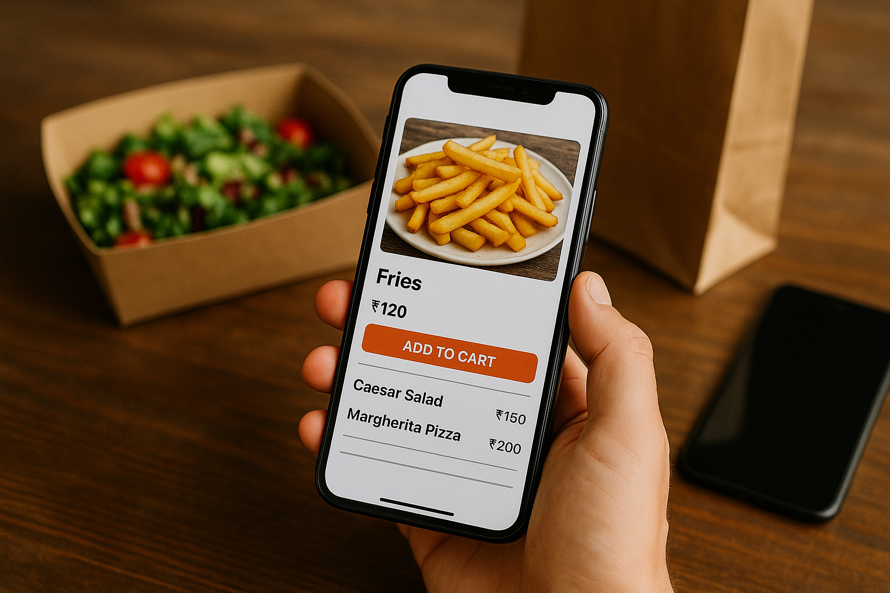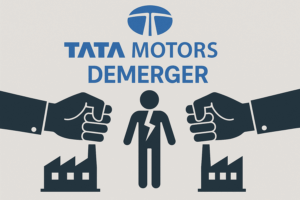
India’s online food delivery market is bracing for a major shake-up. Rapido, the bike-taxi giant, is gearing up to launch ‘Ownly’, a platform that promises to upend the Zomato-Swiggy duopoly with a radically different business model. But is this disruption real, or just another flash in the pan?
Let’s unpack the financial dynamics of this move—and what it means for restaurants, consumers, and investors.
The Opportunity: A $140 Billion Market in the Making
India’s food delivery market is booming. It’s expected to grow from $31.77 billion in 2024 to $140.85 billion by 2030, clocking an impressive CAGR of 28.17%. That’s a big pie—and Rapido wants a big slice.
Rapido is no stranger to challenging established players. It previously carved out space in the ride-hailing market by focusing on affordable bike taxis, leaving Ola and Uber scrambling. With over 2 million riders and 75 million users, it’s now using the same cost-efficient network to enter food delivery.
The Pitch: Zero Commission, Transparent Pricing
Rapido’s pitch to restaurants is simple—and powerful: zero commission.
Instead of taking 20–30% per order like Swiggy or Zomato, Rapido charges restaurants a fixed delivery fee, which will later shift to a flat subscription model. This gives restaurants predictable costs, better margins, and no incentive to hike up menu prices online.
How Rapido’s Pricing Works:
- For orders < ₹100: ₹10 fee to the restaurant + ₹20 paid by the customer.
- ₹100–₹400: Flat ₹25 fee (restaurant).
- ₹400: ₹50 fee (restaurant).
- No platform or packaging fees for customers.
- Same menu prices online and offline.
Effective commission rate? Just 8–15%. That’s half (or less) of what current platforms charge.
Why This Matters Financially
For Restaurants:
- Higher margins = better sustainability.
- Transparent fees mean easier budgeting.
- Customer data is shared (a major departure from industry norms).
For Consumers:
- No surprise fees at checkout.
- Uniform pricing—what you see at the restaurant is what you pay online.
- More affordable meals (Rapido requires partners to offer at least 4 meals under ₹150).
For Rapido:
- Lower CAC (customer acquisition cost) by cross-selling to its existing users.
- Zero incremental capex—it’s reusing its existing delivery network.
- Subscription model could offer stable revenue once scaled.
The Investment Angle: Can the Numbers Work?
Rapido raised ₹4,800 crore ($575M) in funding, including ₹1,300 crore from Swiggy itself—a twist that now looks like a strategic blunder for Swiggy, since there was no exclusivity clause. As of FY24, Rapido reported ₹695 crore in revenue and ₹370 crore in losses, with ₹240 crore in cash on hand.
This is classic high-burn, high-growth strategy—prioritizing market share and platform expansion over short-term profits.
The challenge? Scaling Ownly without losing its affordability edge. The flat-fee model relies on volume and retention—getting enough restaurants to sign up and enough users to keep ordering.
Will It Work? Key Challenges Ahead
- Delivery Experience: Unlike Zomato and Swiggy, Rapido won’t have a dedicated fleet. It’ll use the same riders for food and transport, which could hurt delivery speed—especially during peak hours.
- Brand Recognition: Rapido is well-known in transport, not in food. It’ll need strong marketing to shift consumer perception.
- Incumbent Pushback: Zomato and Swiggy won’t sit still. Expect loyalty programs, pricing tweaks, or even acquisitions to defend market share.
Why It Could Still Be a Game-Changer
- Rapido has cost leadership built into its DNA.
- Its restaurant-first approach is not just ethical—it’s economically smart.
- If the pilot in Bengaluru (launching June–July 2025) succeeds, scaling to other cities will be faster thanks to its existing infrastructure.
In a market where Amazon and Uber Eats failed, Rapido’s unique strength lies in logistics ownership and strategic empathy—something most tech platforms overlook.
Key Takeaways
- Rapido’s “Ownly” is designed to disrupt India’s food delivery space by eliminating commissions and offering price transparency.
- Financially, the model hinges on volume, low costs, and a subscription-based revenue stream.
- The company’s ability to leverage its rider network gives it a serious edge over past challengers like Amazon Food or Ola Cafe.
- Success in Bengaluru could trigger a wave of disruption across India’s hyperlocal economy.
FAQs
Is Ownly really zero commission?
Yes—Rapido charges fixed delivery fees (not percentages), which eventually shift to a flat monthly subscription.
How is Ownly cheaper for customers?
There are no platform or packaging fees, and the menu prices are the same as in the restaurant.
Why did Swiggy invest in Rapido?
Possibly for logistics synergies. But without an exclusivity clause, Swiggy now faces a direct competitor it helped fund.







